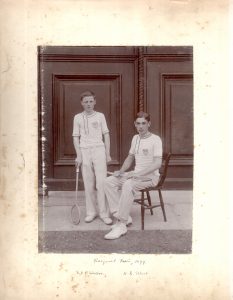| Year |
Worshipful Master |
|
1909-1942 |
|
|
1909-1942 |
|
|
1942 |
|
|
1943 |
|
|
1944 |
|
|
1945 |
|
|
1946 |
|
|
1947 |
|
|
1948 |
Ralph W D Sandford |
|
1949 |
|
|
1950 |
|
|
1951 |
|
|
1952 |
|
|
1953 |
|
|
1954 |
|
|
1955 |
|
|
1956 |
|
|
1957 |
F M Graham Cadie |
|
1958 |
|
|
1959 |
|
|
1960 |
|
|
1961 |
|
|
1962 |
|
|
1963 |
|
|
1964 |
F M Graham Cadie |
|
1965 |
|
|
1966 |
|
|
1967 |
|
|
1968 |
|
|
1969 |
|
|
1970 |
Major General Sir Leonard H Atkinson KBE |
|
1971 |
Major General Sir Leonard H Atkinson KBE |
|
1972 |
Cecil W Foster |
|
1973 |
Major George B Godfrey-Faussett MBE |
|
1974 |
Douglas A R Young |
|
1975 |
|
|
1976 |
|
|
1977 |
David A Little |
|
1978 |
Anthony B Martyr |
|
1979 |
Anthony B Martyr |
|
1980 |
John AS Davis TD |
|
1981 |
John AS Davis TD |
|
1982 |
Anthony B Martyr |
|
1983 |
John AS Davis TD |
|
1984 |
John W Underdown |
|
1985 |
John W Underdown |
|
1986 |
|
|
1987 |
Robert Stewart |
|
1988 |
F M Graham Cadie |
|
1990 |
|
|
1991 |
|
|
1992 |
|
|
1993 |
Alan R Mulliner |
|
1994 |
|
|
1995 |
James R Milne |
|
1996 |
|
|
1997 |
Lt Cmdr Stephen M T Dudley |
|
1998 |
Hew J Dunn |
|
1999 |
Robin C W Tilbrook |
|
2001 |
William F Green |
|
2002 |
|
|
2004 |
Thomas P Hawley |
|
2005 |
Jeremy Moreton-Moss |
|
2006 |
Rory C E Shackleton |
|
2007 |
Christopher E Collins |
|
2008 |
Quentin S Hunter |
|
2009 |
Henry R Hopking |
|
2010 |
John W Edwards |
|
2011 |
Count Charles NA Goblet D’Alviella |
|
2012 |
Major Robert Bartlett |
|
2013 |
Simon H C Wilson |
|
2014 |
Alexander Stuart-Bamford |
|
2015 |
Matt Saunders |
|
2016 |
Derek Barrett |
|
2017 |
Peter Draper |
|
2018 |
Sidhartha V Mallya |
|
2019 |
Nicholas P Jeffery |
Italics indicated second or subsequent year of office.







